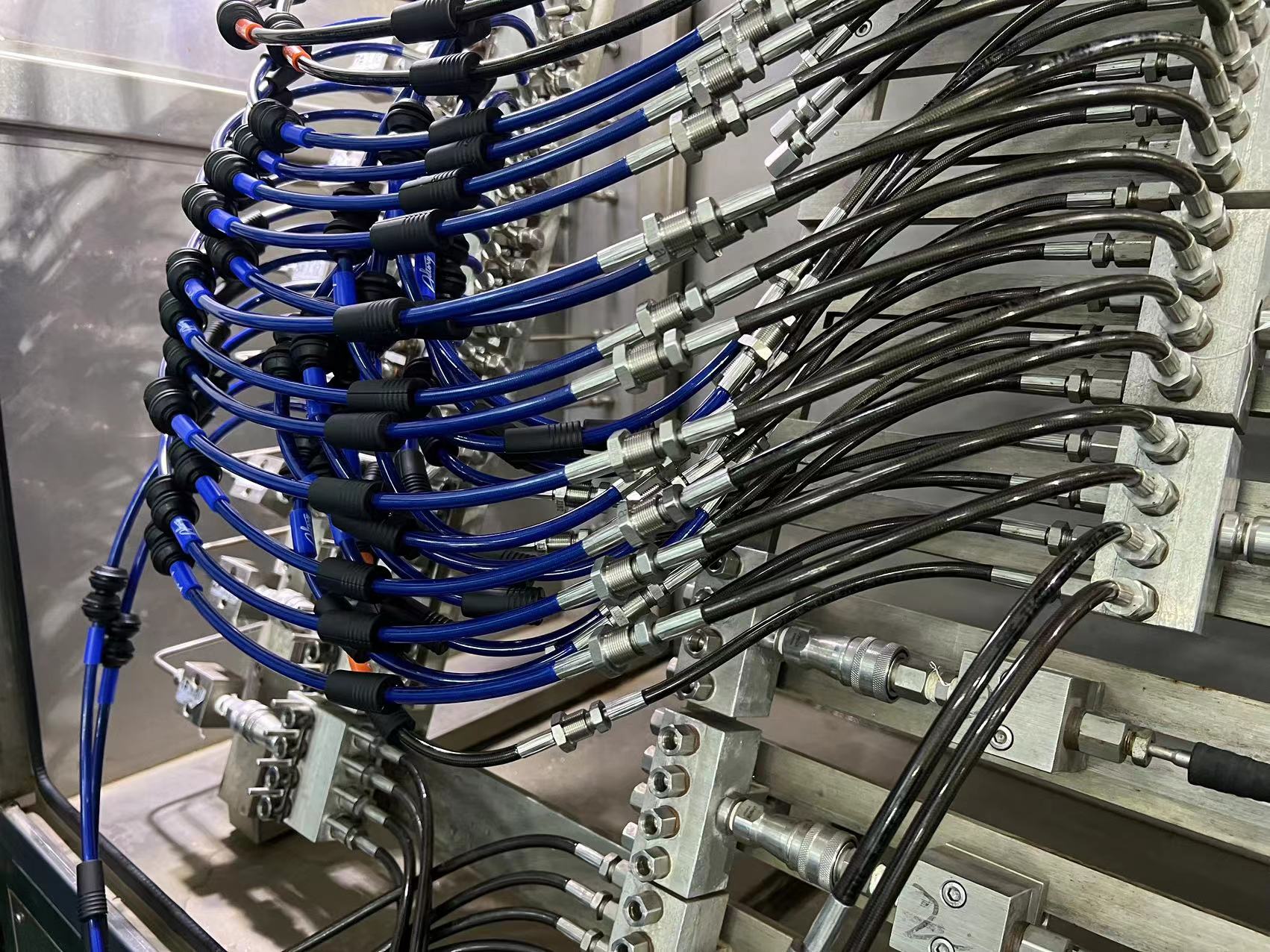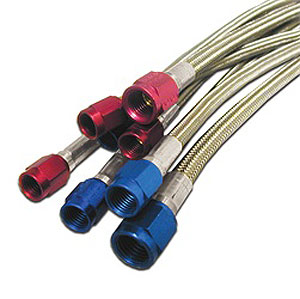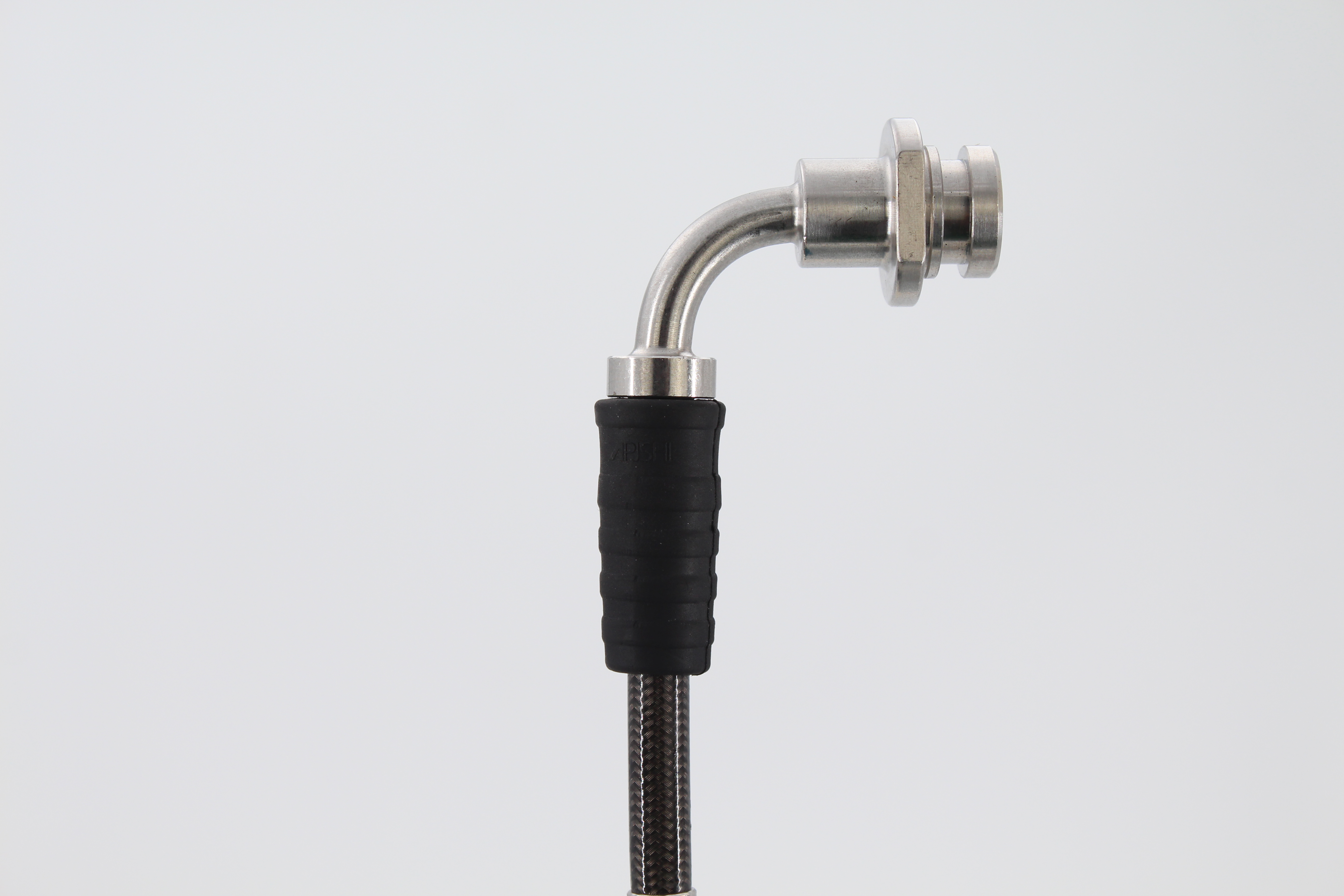The installation of PTFE hoses in fluid transfer systems has been considered a revolution. Due to their flexibility, cold and hot resistance, fluid pressure resistance, and tolerance to adverse chemical conditions, their uses have spread across the aerospace, automotive, pharmaceutical, and manufacturing industries.
However, the PTFE hose still relies on properly matched fittings and connectors because it can not operate effectively independently. These critical components stay unseen as the silent achievers that make the hose leak-tight, safe, and efficient for the transport of fluids or gases.
In this guide, we proceed and explain more information about the PTFE hose fittings, commonly known as the PTFE hose connectors. We will discuss their types, applications, and ways to install them, along with ideas on how to choose the right parts for realizing their excellent performance and longevity of the fluid transfer systems.
What Role do PTFE Hose Fittings and Connectors Play?
PTFE hose fittings and connectors are crucial subassemblies in fluid transmission systems because they clamp the hoses securely to equipment or other hoses. It makes certain that the systems in question do not start leaking and the fluids inside the system do not stagnate. Here’s why they are so critical:
System Integrity: The right class of fittings and connectors helps to prevent system failure by leakage or even disconnection.
Adaptability: They make sure that they retain hoses and equipment that will be in different dimensions and rates of pressure.
Durability: Application: Fittings and connectors specifically for PTFE hoses can also be conditioned to accept similar conditions as hoses; pressures, temperature, and chemicals.

The Ptfe Hose Fittings and How They Are Used
Couplings hitch hoses to specific accessories or other hoses; fittings are the points at which hoses are connected to such items or other hoses. The doors can be in many forms, styles, and materials depending on the client or as used for a certain purpose. Here are the primary types of PTFE hose fittings:
1. Crimp Fittings
Crimp fittings are a sort of permanent type where the fitting is clamped to the hose with a crimping tool as closely as possible. Businesses that work under high pressure are among the many that use them given their strength and endurance.
● Applications: Trucks, automobiles, hydraulic lifts, equipment in industries, etc.
● Advantages: High sealing efficiency, good wear, and minor leakage especially when operated at higher pressure.
2. Reusable Fittings
Reusable fittings are produced in a manner that enables the detachment and reinstallation of the hoses severally and, therefore, ideal for systems that regularly experience change-offs of the hoses.
● Applications: Light industrial uses and general-purpose fluid conveying.
● Advantages: Easy on the pocket in the long run and more environmentally friendly due to repeated use.
3. Compression Fittings
Many of these fittings have hose compression incorporated so that the hose is connected to the fitting. Installation and removal of these components is always easy which makes them ideal for systems that are frequently dismantled and assembled.
● Applications: The plumbing of low-pressure systems and the relation between Low-Pressure systems and plumbing.
● Advantages: Possibilities of installation and other beneficial characteristics of maintenance work.
4. Flare Fittings
In flare fittings, one cuts off the hose and then flares the end which is open before they have it fitted in the particular flare fitting. This variety of fitting can hardly be subject to leakage and is often applied to high-pressure systems.
● Applications: Gas transfer integrated equipment and high-pressure liquid integrated equipment.
● Advantages: Better sealing and high durability.
Exploring PTFE Hose Fittings
Used for coupling two or more hoses essentially for designing different systems with hose connection. They come in several configurations:
1. Straight Connectors
There is a type of connector known as a straight connector that is preferred when hoses are connected in series thus maintaining continuous and non-interrupted flow of fluids.
● Applications: Extension and basic forms of systems, A simple extension and basic systems is a simple extension and basic system.
● Advantages: Good to install and it can perform to the mark reliably.
2. Elbow Connectors
Elbow connectors are used in the case when hoses need to bend, for example, at the angle of 45° or 90°. They are well suited for use in areas of limited space and systems that have difficult configurations.
● Applications: Light automotive and small-scale mechanical and hydraulic operated systems.
● Advantages: Flexibility in design and utilization of space.
3. Tee Connectors
Tees connect two or more conduits or split one flow area into two, hence the T shape.
● Applications: Apparatus that demand the supply and circulation of fluids or multiple-point connections.
● Advantages: The principles of maintaining effective, efficient flow of fluids.
4. Reducer Connectors
Reducer connectors allow the joining of hoses having different measurements of the diameter, that is they allow the different equipment size in one system.
● Applications: Strict mechanical equipment and various fluid networks.
● Advantages: Enhanced system integration.

Which PTFE Hose Fittings and Connectors?
Let it be said that the overall efficiency of the PTFE hose system greatly relies on the accessories, namely the fittings and the connectors to be more precise. Here’s a guide to making the right selection:
● Material Compatibility
Check that the hose material will suit the fittings and connectors and the hose will suit the fluid or gas to be conveyed. Common materials include:
Stainless Steel: It is most suitable for those processes that require high pressure and high temperatures because it is resistant to corrosion.
Brass: Moderate pressure bearing and resistant to several chemicals.
Aluminum: Also known as EPDM rubber, lightweight rubber is preferable for low-pressure systems.
● Size and Specifications
Select fittings and connectors that should be of the same hose diameter, pressure limitations, and temperature resistance. Poor choice of size is likely to cause leakage, wastage, or even failure of the system.
● Application-Specific Needs
Various industries and systems are characterized by certain requirements. For example:
Pharmaceutical Applications: It is always advisable to use components that have been approved for use by the FDA to avoid the risk of arranging for substandard parts.
Aerospace Systems: Select ones, which are equipped for work in severe physical conditions such as fluctuation of temperature and pressure.
How to install PTFE Hose Fittings and Connectors
Installation of a PTFE hose is quite important to ensure you have the correct hose system like Passion Hose to meet all your required applications. Follow these best practices:
● Cut the Hose Precisely
Be sure to have a clean and well-fit cut so as to minimize loose edges that can compromise the seal of the packaging.
● Inspect Components Thoroughly
All fittings, connectors, and hoses must be checked for signs of damage or wear and tear, dirt, or other defects prior to installation.
● Tighten Appropriately
Excessive tightness can harm the components of the joint while jeopardizing looseness might cause leaks. Compliance with manufactured recommended torque values.
● Conduct a System Test
It is recommended to check the connections and all kinds of leaks under operating conditions after installation of the system.

Introduction to a Reliable PTFE Hoses Supplier
Working with a reputable PTFE Hoses Manufacturer like Passion Hose offers several benefits:
Expert Advice: Consult the professionals and receive advice on which fittings and connectors are the most suitable for you.
High-Quality Products: Strengthen your system by using only high-quality and tested materials for the fabrication of the system.
Customization Options: Services for single system needs and circumstances.
Cleaning Maintenance of PTFE Hose Fittings and Connectors
To maximize the lifespan of your PTFE hose system, regular maintenance is essential:
● Inspect Frequently: Regularly check for signs of deterioration plus corrosion and leakage and if possible replace any part that seems to have been damaged.
● Clean Thoroughly: The components should be clean so that there is no interference of contaminants from affecting the efficient performance of the equipment in the plant.
● Store Properly: Some hoses include rubber, silicone hydraulic, etc., to protect them from getting damaged by extreme temperatures or humidity while in storage.
Conclusion
PTFE hose fittings and connectors are the life and soul of most of the present-day and trendy high-performance fluid transfer systems. If you know the kind, uses and how they can be chosen, then you can enhance the performance and safety of your system.
With Passion Hose, a competent PTFE Hoses Manufacturer, you are assured of the best materials that will meet your needs. This assertion rings true whether you’re in aerospace manufacturing or the pharmaceutical business – the right fittings and connectors ultimately determine the long-term success of your operations.